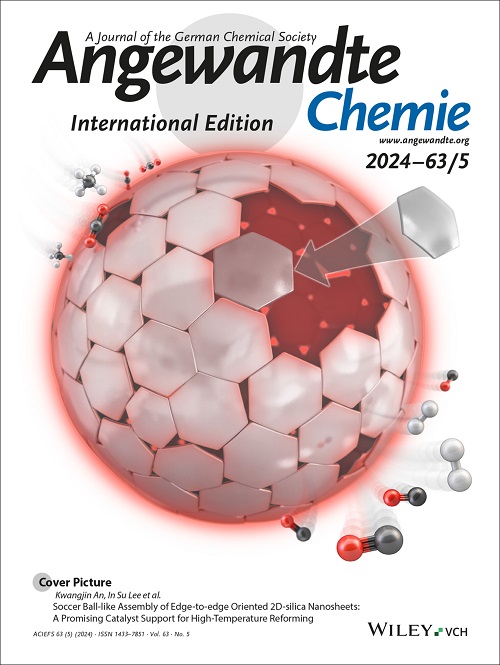Mechanically and Chemically Co‐Robust Ni‐Rich Cathodes with Ultrahigh Capacity and Prolonged Cycle Life
IF 16.1
1区 化学
Q1 CHEMISTRY, MULTIDISCIPLINARY
引用次数: 0
Abstract
Ni‐rich layered oxide (NRLO) materials are considered highly promising cathode for lithium‐ion batteries. However, their practical application is limited by capacity loss and interface instability caused by chemical and mechanical failure during cycling. Doping has been identified as a direct and effective method to address these challenges. However, mechanistic understanding of doping enhanced electrochemical performance is still unclear. In this study, the introduction of high‐valent Nb ions was employed to achieve mechanical‐chemical coupling regulation, thereby concurrently improving the capacity and cycle life of NRLO. First, Nb5+ doping was conducted to refine secondary grains, achieving a "grain refinement" effect similar to that in ceramics and alloys, while further stabilizing the grain boundaries. The inter‐grain fusion structure of NCM811‐0.5Nb effectively dissipates lattice strain under highly delithiated state, suppresses oxygen loss, and prevents cracks that lead to fracture during cycling. Moreover, Nb doping stabilizes the monoclinic phase during phase transitions and promotes the formation of highly stable spinel twin boundaries after cycling. This study demonstrates a comprehensive understanding of the concurrent capacity and stability enhancement mechanisms attributed to Nb‐doping and highlights the significant potential of the synergistic regulation of mechanical and chemical coupling in improving the capacity and lifespan of NRLOs by Nb‐doping.具有超高容量和延长循环寿命的机械和化学Co -鲁棒富镍阴极
富镍层状氧化物(NRLO)材料被认为是极有前途的锂离子电池正极材料。然而,它们的实际应用受到循环过程中化学和机械失效引起的容量损失和界面不稳定的限制。兴奋剂被认为是解决这些挑战的直接和有效的方法。然而,掺杂增强电化学性能的机理尚不清楚。在本研究中,通过引入高价Nb离子来实现机械-化学耦合调节,从而提高NRLO的容量和循环寿命。首先,通过掺杂Nb5+细化二次晶,达到类似陶瓷和合金的“细化晶粒”效果,同时进一步稳定晶界。NCM811‐0.5Nb的晶间熔合结构有效地消散了高衰减状态下的晶格应变,抑制了氧的损失,防止了循环过程中出现裂纹导致断裂。此外,Nb掺杂在相变过程中稳定了单斜晶相,并促进循环后形成高度稳定的尖晶石孪晶界。本研究全面了解了Nb掺杂导致的并发容量和稳定性增强机制,并强调了通过Nb掺杂提高NRLOs容量和寿命的机械和化学偶联的协同调节的巨大潜力。
本文章由计算机程序翻译,如有差异,请以英文原文为准。
求助全文
约1分钟内获得全文
求助全文
来源期刊
CiteScore
26.60
自引率
6.60%
发文量
3549
审稿时长
1.5 months
期刊介绍:
Angewandte Chemie, a journal of the German Chemical Society (GDCh), maintains a leading position among scholarly journals in general chemistry with an impressive Impact Factor of 16.6 (2022 Journal Citation Reports, Clarivate, 2023). Published weekly in a reader-friendly format, it features new articles almost every day. Established in 1887, Angewandte Chemie is a prominent chemistry journal, offering a dynamic blend of Review-type articles, Highlights, Communications, and Research Articles on a weekly basis, making it unique in the field.

 求助内容:
求助内容: 应助结果提醒方式:
应助结果提醒方式:


